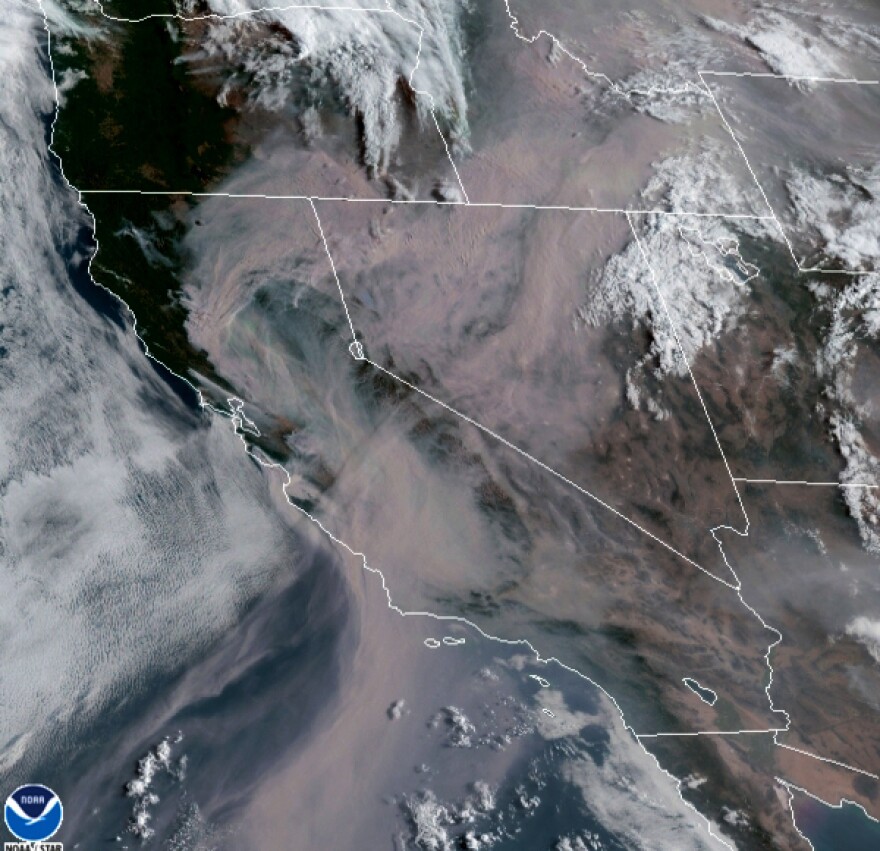The historic wildfires in California dirtied the air in Southern Nevada last week
Winds brought the smoke to the Las Vegas Valley, prompting a days-long air-quality alert that expired Sunday.
“Things got pretty bad last week," said Kevin MacDonald of the Clark County Department of Environment and Sustainability, "We had four consecutive ozone exceedance days and that was due to wildfires smoke that was blowing in from California, and I believe, parts of Arizona as well.”
MacDonald told State of Nevada that fires contribute to ozone pollution, which typically increases in the summer anyway.
“During the summer months, here in Clark County, we’re in what’s known as ozone season. So, we’re on an ozone advisory from the beginning of April until September because that’s when ozone is at its peak,” he said.
Ozone can damage airways and exacerbate respiratory problems. MacDonald said people with asthma or other breathing problems should use extra caution when ozone is high but healthier people shouldn't ignore the warnings.
"It is a good idea for everybody, whether they’re healthy or have some underlying health conditions, to pay attention to the air quality because we all breath the same air,” he said.
Ground-level ozone is created with oxides, nitrogen and volatile organic compounds get cooked by the sun. When smoke from wildfires drifts our way, the problem gets worse.
MacDonald said Southern Nevada is a perfect place for ozone to get created.
“One of the reasons we have such high ozone it’s not just because of our weather," he said, "It’s because of our geography, our topography and the weather because we have a lot of heat, a lot of sun, a lot of people, a lot of cars on the road, but also with all the mountains around Clark County pollutants can come and settle in. It’s like a bowl that cooks ozone.”
MacDonald says the best way to combat the chemical is for people to drive less because the exhaust from cars is filled with chemicals that contribute to ozone development.
He also suggested people fill up their cars after sunset because the fumes from gasoline are one of the volatile organic chemicals. So, releasing it during the day means it will create more ozone.
The department measures air pollution in Southern Nevada through a network of 13 monitoring stations.
Last year, the valley only saw three days of exceedance on ozone but this year and 2018 there were several days where ozone exceeded recommended limits.
Kevin MacDonald, spokesman, Clark County Department of Environment and Sustainability








